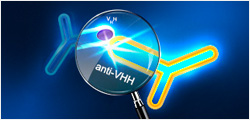| Species |
Human |
| Protein Construction |
CCL5 (Ser24-Ser91)
Accession # P13501 |
|
| Purity |
> 98% as analyzed by SDS-PAGE
> 98% as analyzed by HPLC |
| Endotoxin Level |
< 1 EU/μg of protein by LAL method |
| Biological Activity |
Fully biologically active when compared to standard. The biological activity determined by a chemotaxis bioassay using human peripheral blood monocytes is in a concentration range of 1.0-10.0 ng/ml. |
| Expression System |
E. coli |
| Theoretical Molecular Weight |
7.8 kDa |
| Formulation |
Lyophilized from a 0.2 μm filtered solution in 20 mM PB, pH 7.4, 100 mM NaCl. |
| Reconstitution |
It is recommended that this vial be briefly centrifuged prior to opening to bring the contents to the bottom. Reconstitute the lyophilized powder in sterile distilled water or aqueous buffer containing 0.1 % BSA to a concentration of 0.1-1.0 mg/ml. |
| Storage & Stability |
Upon receiving, this product remains stable for up to 6 months at -70°C or -20°C. Upon reconstitution, the product should be stable for up to 1 week at 4°C or up to 3 months at -20°C. Avoid repeated freeze-thaw cycles. |
| Target Background |
CCL5 or RANTES (acronym for Regulated upon Activation, Normal T cell Expressed and presumably Secreted), was initially discovered by subtractive hybridization as a transcript expressed in T cells but not B cells. Eosinophilchemotactic activities released by thrombinstimulated human platelets have also been purified and found to be identical to RANTES. Besides T cells and platelets, RANTES has been reported to be produced by renal tubular epithelium, synovial fibroblasts and selected tumor cells. |
| Synonyms |
CCL-5; D17S136E; RANTES; SCYA5; SIS-delta; SISd; TCP228; eoCP; C-C motif chemokine ligand 5 |
����� For laboratory research use only. Direct human use, including taking orally and inje������ction and clinical use are forbidden.

































